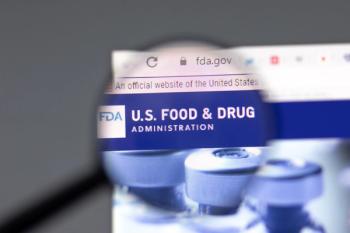
- Applied Clinical Trials-03-01-2004
FDA, HHS Seek to Clarify Research Policies
Policymakers want to harmonize for safety reporting, IRB operations, patient access, and other areas to spur product development.
Although spending on biomedical research is at an all-time high, fewer new drugs are coming to market. Industry leaders and officials at the Food and Drug Administration are examining procedures and seeking ways to encourage drug development, as seen in numerous FDA initiatives announced in the past year. The over-arching goal is to speed access for all Americans to safe and affordable new medicines, according to a January 2004 FDA white paper on Protecting and Advancing Consumer Health and Safety.
A sign of the problem is FDAs fairly thin pipeline of new drugs under develop-ment and in line for market approval. Last year FDA approved only 21 new molec-ular entities (NMEs), up from a lowly 17 in 2002, but still far below early 1990 rates when the agency cleared about 30 NMEs each year.1 Similarly, the number of commercial INDs (investigational new drug applications) filed with the agency has hovered around 425 for the last four years, well below the high of 498 INDs submitted in 1998. Prospects are low for a big surge in new approvals this year, as the cadre of medical products in late-stage clinical trials remains steady, similar to the number of applications for NMEs filed in recent months.
With the FDA application approval process already up to full speed, FDA commissioner Mark McClellan aims to accelerate product development by clarifying clinical research requirements and reducing unnecessary burdens on researchers. An FDA goal is to limit excessive paperwork that goes beyond regulatory requirements, according to David Lepay, senior advisor on clinical science in FDAs Office of Science and Health Coordination. Sponsors and investigators often raise questions about the value of certain procedures, and FDA seeks to respond to these concerns, Lepay explained at the December 2003 annual conference on IRBs (institutional review boards) sponsored by PRIM&R (Public Responsibility in Medicine and Research).
One objective is to minimize differences in rules for obtaining informed consent and for reporting adverse events among FDA and other agencies in the Department of Health and Human Services (HHS). Lepay is working closely with Bernard Schwetz, acting director of HHS Office for Human Research Protections (OHRP), to establish common policies for reducing conflicts of interest, registering IRBs, and overseeing pediatric and international studies. OHRP and FDA are gaining assistance in evaluating these issues from the Secretarys Advisory Committee on Human Research Protections (SACHRP), which has mapped an agenda for its first full year in business (see sidebar). Clinical research policies and programs slated for re-examination and clarification this year cover a number of areas key to clinical trial management:
Electronic data submission
In November 2003, FDA announced plans for electronic submission of INDs for cancer therapies in collaboration with the National Cancer Institute. The policy aims to test e-filing procedures to set the stage for electronic submission of all INDs in the future. As part of its campaign to shift from paper to e-submissions, FDA also plans to require sponsors to electronically file clinical data that supports NDAs, biological license applications, supplements, and generic drug applications. These e-submissions would use standard data structure, terminology, and code sets to make it easier for FDA staff to process, review, and archive information from clinical studies. Instead of paging through patient medical files whenever new questions arise, FDA reviewers will be able run data searches large volumes of patient information.
Safety of study participants
A top priority for FDA, OHRP, and the National Institutes of Health (NIH) is to harmonize policies for defining which adverse events in clinical studies should be reported to whom and when. These issues were discussed at the December 2003 SACHRP meeting, with a focus on how the task of reviewing reams of adverse event reports is overburdening IRBs. Efforts to more clearly identify those critical adverse events that warrant further IRB review aim to both halt the adverse-event reporting flood and also improve compliance among investigators and sponsors.
In a related area, FDA is working to finalize a November 2001 draft guidance on the establishment and operation of Data Monitoring Committees (DMCs). The initiative reflects increased use of DMCs in industry-sponsored trials, in addition to NIH-funded studies that involve severely ill patients. The main purpose of DMCs is to determine if a trial should be stopped earlyeither because efficacy data is so strong that treatment should be provided to more patients sooner, or because adverse events indicate clear safety problems. The guidance aims to clarify how these committees should monitor study data during trials in order to provide an objective, confidential assessment of interim results. Using DMCs increases the complexity and cost of trials, however, and sponsors are wary that FDA may require DMC oversight too broadly.
Acceptance of foreign data
FDA seeks to clarify its policy for accepting data from foreign clinical studies not conducted under an IND. The proposal would clarify that such studies must be conducted in according with good clinical practices. This includes review and approval by an independent ethics committee, in line with standards adopted by the International Conference on Harmonization (ICH).
Cracking down on false data
A new FDA proposal would require sponsors to promptly report any information indicating that any person may have falsified data related to designing, recording, supervising, reviewing or reporting research results.
Re-evaluating IRBs
A prime goal for FDA and OHRP is to address concerns about the roles and responsibilities of overburdened review boards. OHRP seeks to define more clearly what research institutions should do to ensure that IRB officials and other personnel who oversee clinical studies receive appropriate training and education about human subject protection requirements. At the PRIM&R conference, Schwetz commented on the need to clearly define the role of IRBs in order to improve the biomedical research enterprise. He noted a wide diversity in how IRBs do business, and that this has an impact on protocol reviews.
A prime initiative of FDA and OHRP is to require all IRBs to register with HHS in order to facilitate government communication with these panels. FDAs proposal calls for IRBs to provide information on institutional affiliation, key personnel, and type and volume of FDA-regulated products under review. Registration also will help FDA identify those IRBs that warrant on-site inspection.
Along theses lines, FDA is evaluating the effectiveness of its program for inspecting about 300 IRBs each year to ensure compliance with agency regulations. Most site visits examine processes more than specific studies, but a few are for cause inspections, resulting from past problems or complaints. Inspections target new IRBs and highly active boards involved with numerous FDA-regulated studies.
Pressure for access
Increased pressure from patient advocates is prompting FDA to clarify policies affecting how patients with serious and life-threatening conditions may obtain early access to therapies still being tested. In January, the agency issued a draft guidance that calls for sponsors to provide information about early access policies through the agencys Clinical Trials Data Bank. A related new rule would describe how patients may obtain investigational drugs for treatment use, particularly in emergency situations and through treatment protocols.
FDA also is developing a proposed rule to clarify when and how sponsors may charge patients for experimental drugs. The policy will describe the types of investigational uses for which a sponsor may charge, which costs may be recovered, and criteria for permitting such charging practices.
References: 1: www.fda.gov/bbs/topics/NEWS/2004/NEW01005.html.
SIDEBAR: SACHRP Maps Agenda
After taking more than a year to get organized, the Secretarys Advisory Committee for Human Research Protections has identified several specific topics where it hopes to have an impact. At its inaugural meeting in July (2003), the committee established three subcommittees on key issues:
Pediatric research. Significant expansion in clinical studies involving children is prompting SACHRP to continue previous examinations of procedures for overseeing pediatric research proposals that involve more than minimal risk or that fail to directly benefit the participant. The panel has called on OHRP to provide guidelines for IRBs evaluating such research protocols in order to identify those studies that warrant further HHS review. Approaches for reviewing high-risk studies involving children are under review at FDA in an effort to seek harmony between FDA and HHS regulatory procedures.
Research involving prisoners. The panel is reviewing a 1978 policy to reflect increased demand from prisoners to participate in clinical studies. The subcommittee may call for major changes in HHS policies to more clearly define which incarcerated individuals and which studies fall under the rules plus prisoners rights to follow-up care. A confusing issue for IRBs and sponsors is how to deal with participants who become incarcerated after entering a clinical study.
Accreditation of research organizations. This subcommittee is examining the potential impact of these programs, what incentives spur research institutions to seek accreditation, and the need to certify accreditation organizations themselves. The panel generally supports accreditation and is weighing the benefits of accreditation standards and accreditation of IRBs.
SACHRP also plans to discuss the effect of new privacy rules on clinical research operations, namely participant recruitment practices and access to databases and tissue repositories. Additional topics on the agenda include the impact of litigation on clinical research and the role of central IRBs in overseeing large studies. SACHRP plans to establish a new subcommittee on adverse event reporting when the accreditation panel completes its work.
JW
Articles in this issue
over 21 years ago
Meet the EAB 2004over 21 years ago
Data Monitoring Committees in Practiceover 21 years ago
eShowcaseover 21 years ago
The 11-Day Weekover 21 years ago
Navigating the New 21 CFR 11 Guidelinesover 21 years ago
An Agency Fore-warned Is an Agency Fore-armedNewsletter
Stay current in clinical research with Applied Clinical Trials, providing expert insights, regulatory updates, and practical strategies for successful clinical trial design and execution.






.png)



.png)



.png)
.png)
